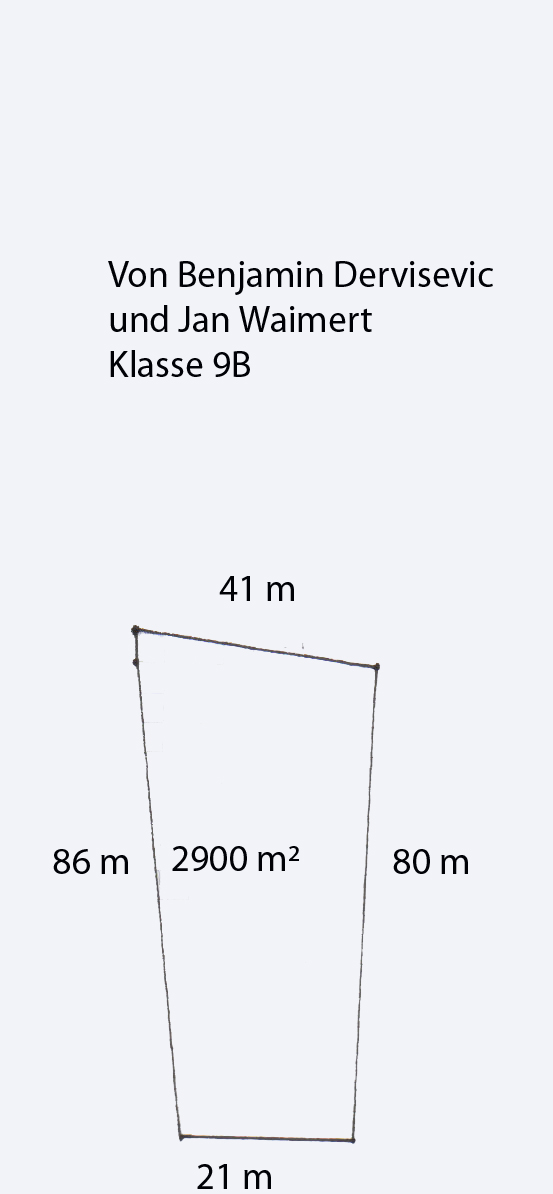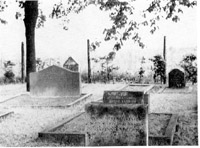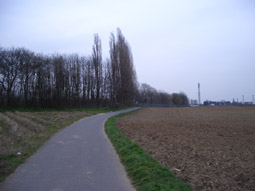The area today is marked
by high natural cover, so that it is silhouetted
against its adjoining environment.
| East elevation
of the Jewish graveyard (2004) |
|
 |
| |
|
|
 |
|
South elevation of the Jewish graveyard (2004) |

The proportions shown
in the sketch lead to the persuasion that the area
of the graveyard is rather big.
Nevertheless, taking a look at pictures from the
1950s, one will recognize that the graveyard has
been a lot smaller.
The spiles of the former fence were put up in a
distance of about 1 meter to the burial ground.
There were no
deciduos trees beyond the fence, so there was a
clear view on the graveyard.
|
|
 |
| |
|
|
 |
|
Even
though the piles from the picture takin in the
1950’s don’t exist anymore, one can still see
that the clades of the hedge still make a line.
Those trees were obviously put up for an
additional boundary. (Photo: East elevation) |
| |
|
|
| The course of
the hedge is recognizable in to the south, too.
Taking a look at the
ground conditions, one can see that the burial
ground is situated higher.(in the left half of
the picture)
|
|
 |
| |
|
|
 |
|
This presumption is approved by a photo taken in
the 1950’s. |
| |
|
|
Hence the following
results arise:
The area of the
graveyard that was built in the 1920’s was a small
fenced property, that was free of deciduos tees.
Todays afforestation simulates a way bigger area,
2900 square meters. Therefore the graveyard was
raised up on a field and bordered by a fence. The
tree population beyond the former borders of the
graveyard, that is visible today, got there in the
1960’s. They chose trees that gain height rather
fast. The analysis of the tree population that was
made by the teacher for biology, Mrs. Krötz,
supports our thesis. A beech grove developed in
between the original area of the graveyard and the
one today. It is to be seen as a forest of
succession, viz: The tree population spread
unopposed and nobody took care of it. The tree’s
growing stage match the course of about 40 years. To
the south of the outskirt area poplars outperform
the beech grove population. This is due to the trait
that poplars are fast-growing trees.

Along the path
cottonwood was planted; todays cementery is
surrounded by a little beech grove (on the left).